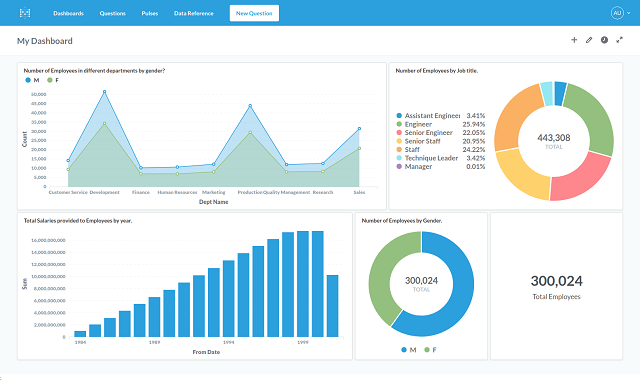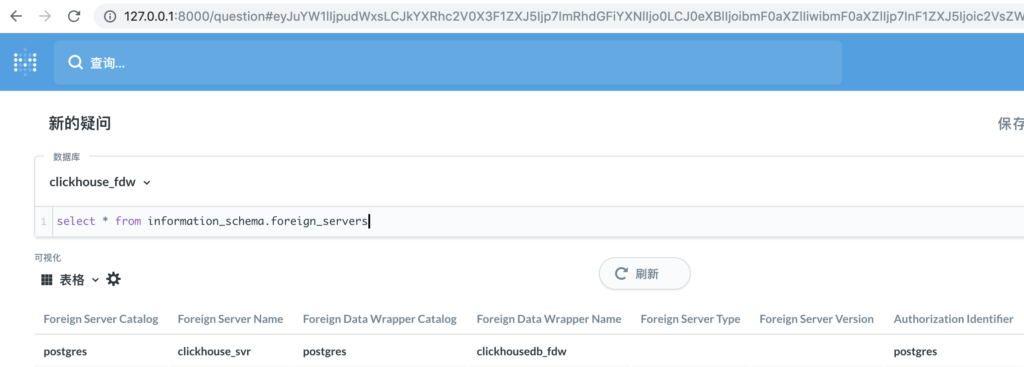

ĮxecStart=/usr/bin/java -Xms128m -Xmx256m -jar metabase.jar Give this user ownership permission to the applications directory: sudo chown -R appmgr:appmgr /apps/javaĬreate a systemd service unit file: sudo vim /etc/systemd/system/rviceĪdd the contents below to the file. Next, we create a system user appmgr with the default group sudo useradd -r -s /bin/false -g appmgr appmgr Start by creating a system group for the user.
Metabase documentation how to#
How to run Java Jar Application with Systemd on Linuxįor the sake of simplicity, I’ll do a specific systemd service file for metabase.A separate guide on running Java applications with systemd is available on our blog. The best way to run Metabase is using Systemd init system available on both Debian 10 / Debian 9. Step 4: Configure Metabase Systemd service This will start the Metabase application using all of the default settings. $ java -jar metabase.jarĠ1-14 21:24:56 DEBUG plugins.classloader :: Using NEWLY CREATED classloader as shared context classloader: Ġ1-14 21:24:57 INFO metabase.util :: Loading Metabase.Ġ1-14 21:24:57 INFO metabase.util :: Maximum memory available to JVM: 483.4 MBĠ1-14 21:25:01 INFO util.encryption :: Saved credentials encryption is DISABLED for this Metabase instance. The most basic way of running Metabase to use the javacommand to launch the application.
Metabase documentation install#
If the database server is remote, assign privilege to a user at specific IP address, e.g: allow access from any IP – Not recommended for a server with public access: Step 3: Install Metabase on Debian 10 / Debian 9ĭownload Metabase and save it on the path where you want the application to run from. GRANT ALL PRIVILEGES ON metabase.* TO IDENTIFIED BY " StrongPassword" Login to MySQL shell as root user sudo mysql -u root -pĬreate a database and user with access privileges: CREATE DATABASE metabase I’ll create a database for use with Metabase on MySQL database server like below. For this lab, we’ll use MariaDB database server which was set using the following guide. You can skip this step if you have a data store for Metabase already configured. OpenJDK 64-Bit Server VM (build 11.0.12+7-post-Debian-2, mixed mode, sharing) Step 2: Install and configure the Database server ( MariaDB) OpenJDK Runtime Environment (build 11.0.12+7-post-Debian-2) Verify that Java is installed and working. Then install Java JDK in the Debian system: sudo apt install -y default-jdk
Metabase documentation update#
Next, create a Metabase admin account and connect to your database using the Metabase Setup Guide.Update your APT package index: sudo apt -y update That’s it! Metabase will be live on your Render URL as soon as the Docker build finishes.

If you have more than a small amount of test data, we recommend at least 2GB of RAM. We recommend selecting a Web Service instance type with at least 1GB of RAM for Metabase. You can optionally encrypt your Metabase database connection details by adding the MB_ENCRYPTION_SECRET_KEY environment variable as described in the Metabase operations guide. The internal database URL for the database you created above.

Select Docker for the environment, and add the following environment variable under the Advanced section: Key You will configure a connection to your application database in Metabase after installation.Ĭreate a new Web Service on Render, and give Render permission to access your new repo. This is the database where Metabase stores its own data. One-Click DeployĬlick Deploy to Render below and follow the prompts to deploy Metabase on Render.Ĭreate a new PostgreSQL database on Render and copy the internal DB URL to use below. It is backed by Render’s fully-managed PostgreSQL and can be used to gain insights from any supported database including PostgreSQL, MySQL, Google Analytics, and MongoDB. You can deploy Metabase on Render in under 5 minutes.


 0 kommentar(er)
0 kommentar(er)
